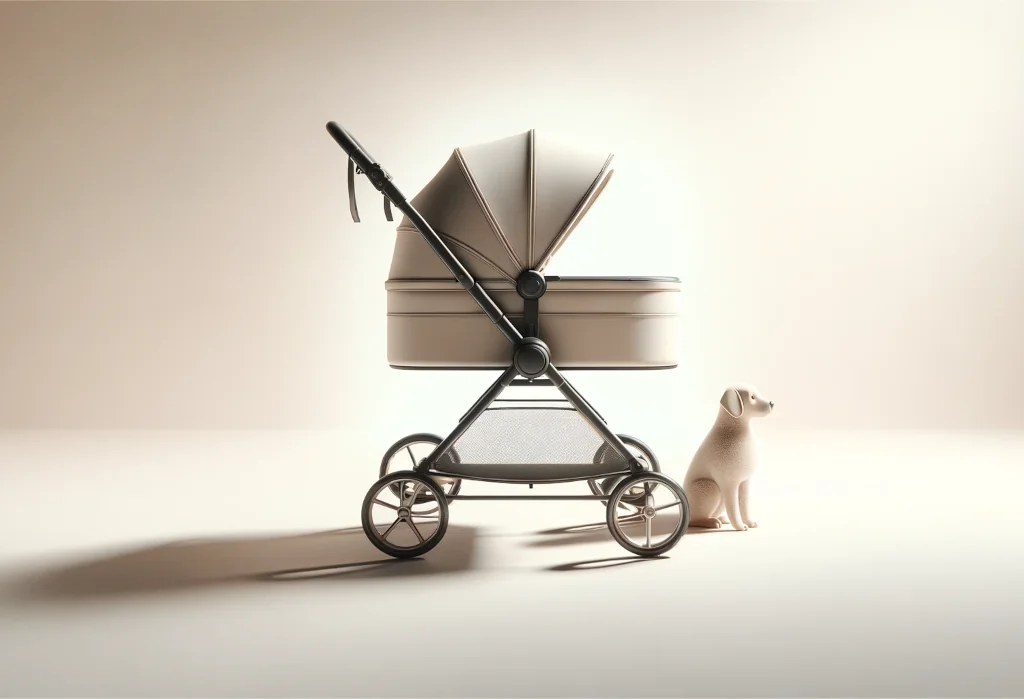
Walking your dog is one of life’s simple pleasures, but sometimes, it’s not as straightforward as it sounds. Whether it’s age, size, or health complications, our furry friends don’t always find walks as enjoyable as they once did. You’re about to discover why dog strollers could be a game-changer for you and your pet, making every outdoor adventure a possibility, regardless of those hurdles.
Quick Takeaways:
- Dog strollers enhance outdoor adventures for pets with mobility issues, ensuring their safety and inclusivity.
- Look for a stroller with durability, comfort, and appropriate size and weight capacity to match your dog’s needs.
- Introduce the stroller to your dog gradually, using treats and praise, to make it a positive and secure experience.
Why Consider a Dog Stroller?
Have you ever thought that a dog stroller might seem like an indulgence at first glance? You’re not alone. But let me tell you, for some pet owners, it’s anything but a luxury—it’s a game-changer.
If you have an elderly pet, one recovering from surgery, or a small breed prone to tiring easily, a dog stroller can mean the difference between your furry friend joining in on outdoor adventures or staying behind. Convenience is the keyword here, but it’s not just about making life easier for you. It’s about ensuring your pet’s safety and inclusivity. A stroller shields your pup from aggressive dogs, hot pavement, and allows them to enjoy outings they otherwise couldn’t. And let’s not overlook the benefits for you—less carrying and worry means a happier, more enjoyable walk for both of you.
What Are the Key Benefits of Dog Strollers?
Extended Outdoor Time
For pets with mobility issues, a dog stroller is like a VIP pass to enjoy the great outdoors. It gives them the chance to bask in the sun and fresh air, promoting mental health and well-being. Imagine the joy your dog will get from being able to accompany you on a stroll through the park, something they might not manage on foot.
Safer Vet Visits
We all know that vet visits can be chaotic. A dog stroller helps create a safe haven for your pet amidst the hubbub, especially when the waiting room is crowded. It’s also a boon for pets who get nervous around other animals.
More Enjoyable Outings
Here’s where the benefits really shine through for both you and your pet. A dog stroller means less stress all around. There’s no need to constantly be on the lookout for dangers on the ground or manage your dog’s reactions to other pets and people. You get to enjoy a peaceful outing, and so does your four-legged friend.
How Can Dog Strollers Be Used?
Crowded Places
Dog strollers are a lifesaver in crowded environments. Whether it’s a busy city street, a market, or a fair, your pet can observe the hustle and bustle from the security and comfort of their stroller, safe from being stepped on or overwhelmed.
Challenging Weather Conditions
We can’t control the weather, but a dog stroller can help us manage its impact on our pets. On hot days, it allows them to enjoy the outdoors without the risk of overheating or burning their paws. Conversely, in cold or wet conditions, it offers a cozy retreat.
Aiding Pets with Social Anxieties or Physical Disabilities
For dogs that have social anxieties or are fearful of other dogs and people, a stroller acts as a barrier, providing them with a sense of security. Similarly, for pets with physical disabilities, the stroller is their ticket to joining in on family adventures without the physical effort that would otherwise be impossible.
One often overlooked benefit of dog strollers is their utility in behavioral training environments. They can be used as a tool to gradually expose anxious pets to new situations in a controlled and safe manner, boosting their confidence in the process.
Dog strollers aren’t just a fancy accessory; they’re a practical tool that can significantly enhance the quality of life for both pets and their owners. It’s about providing the best care for our furry family members, ensuring they’re included and safe, no matter where our adventures take us. So, next time you’re planning an outing, don’t just leash up—consider whether a dog stroller might make the experience more enjoyable for you and your pet.
What Features Should You Look for in a Dog Stroller?
When scouting for the perfect dog stroller, a few critical features can make all the difference between a bumpy ride and a smooth saunter. Here’s what to keep an eye on:
- Durability: Look for strollers made with high-quality materials capable of withstanding the rigors of daily use and different terrains. A sturdy frame, combined with durable fabric, ensures longevity.
- Comfort: Your dog’s comfort is paramount. Opt for strollers with enough padding and breathable materials. An adjustable canopy can help protect your pet from the elements without making them feel enclosed.
- Size and Weight Capacity: Match the stroller’s size and weight capacity to your dog. There should be enough room for them to sit, stand, and turn around comfortably.
- Ease of Cleaning: Removable and washable liners are a godsend. Spills, dirt, and pet hair are inevitable, so easy-to-clean surfaces make maintenance a breeze.
- Safety Features: Look for safety belts or harness clips to secure your dog, reflective elements for visibility, and locks on the wheels.
- Portability and Storage: If you’re always on the go, a lightweight and foldable design will be your best friend. Also, check for extra storage space for essentials like water bottles, treats, and toys.
A feature often overlooked but incredibly useful is the Height-Adjustable Handle. This unique addition caters to the comfort of the pet owner, ensuring that regardless of your height, you can enjoy walks without the strain on your back or shoulders.
Is Every Dog Suitable for a Dog Stroller?
Absolutely not all dogs will bask in the glory of a strolled jaunt. Dog strollers are particularly beneficial for:
- Small breeds that tire easily over long distances or cannot keep pace on runs.
- Senior pets who might suffer from arthritis or mobility issues but still enjoy the outdoors.
- Dogs with injuries or recovering from surgery needing fresh air but cannot walk on their own.
- Anxious pets that feel more secure in an enclosed environment in crowded or noisy areas.
However, active and large breeds might find the confinement frustrating. These dogs thrive on physical activity and may not adapt well to being in a stroller. It’s also crucial to consider your dog’s personality and whether they can stay calm and content in a confined space for an extended period.
How to Introduce Your Dog to a New Stroller?
Introducing your dog to a stroller requires patience, positive association, and gradual familiarization. Here’s how to make the transition as smooth as a leisurely stroll in the park:
- Start with the Stroller at Home: Let your dog inspect and sniff it out in a familiar environment. Keep it open, so they can explore inside on their terms.
- Use Treats and Praise: Associate the stroller with positive experiences. Place treats inside for them to find or feed them their favorite snacks while they’re sitting calmly in it.
- Short Indoor Trials: Before hitting the road, let your dog get used to sitting in the stroller as you push it around the house. Keep these initial sessions short and sweet.
- Gradually Move Outdoors: Once they seem relaxed indoors, it’s time to venture outside. Begin with brief strolls in a quiet, familiar area to reduce potential stress.
- Consistency is Key: Regular, short walks can help solidify the stroller as a part of their routine. Each positive stroller experience will build their confidence.
Here’s a unique tip: for dogs that are particularly nervous, laying a worn t-shirt of yours in the stroller can provide comfort and security, thanks to the familiar scent. It’s a comforting strategy that isn’t widely discussed but can significantly ease the transition for more anxious pets.
Remember, every dog warms up to new experiences at their own pace. With these steps, most dogs can learn to enjoy their rides, seeing the stroller as a safe and fun means to explore the world with their beloved owners by their side.
Alex, a passionate animal lover, has experience in training and understanding animal behavior. As a proud pet parent to two dogs and three cats, he founded AnimalReport.net to share insights from animal experts and expand his knowledge of the animal kingdom.




